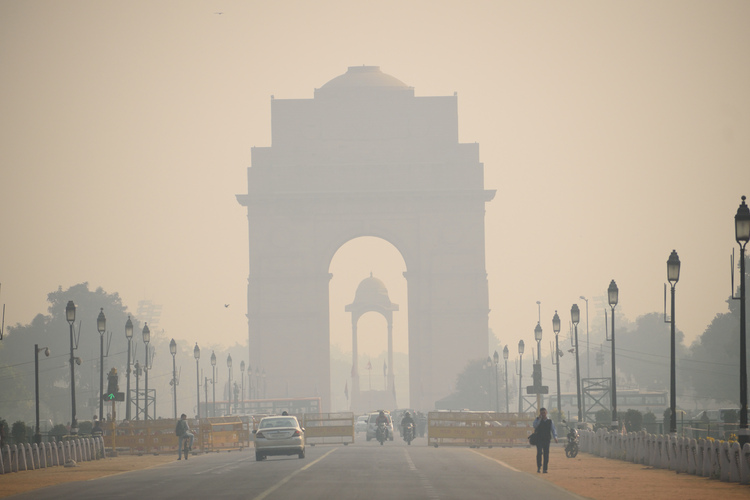
Scientists hope to wash away Delhi’s deadly air pollution by creating artificial rain through cloud seeding
By
In New Delhi, the capital of India, it’s tempting to say that there’s a certain irony to Diwali, or the Festival of Lights. And that’s because, year after year, as the festival comes to a close, the sunlight above Delhi and other big north Indian cities is invariably blocked out by toxic clouds of haze.
This year, on 13 November, the day after the festival, was no different, with residents of Delhi waking to a poisonous smog draped over the city and reducing visibility to mere metres. But now, scientists hope to clear the air by using cloud seeding.
The federal governments Safar app indicated that the Air Quality Index (AQI) on that afternoon in Delhi was 445 in most of the city but was as high as 520 in some areas. The AQI measures the levels of PM 2.5 in the air. These are fine particles that can clog lungs and cause respiratory illnesses.
If the AQI level is between 101 and 200 then air pollution is considered moderate. Between 201 and 300 it’s considered poor. From 301 to 400 is very poor, and above 400 is rated as severe air pollution. The World Health Organisation recommends that a person’s exposure to PM 2.5 over a 24 hour period should not exceed 15 micrograms per cubic metre. In parts of Delhi the day after Diwali the exposure rates were 30 times higher.
Despite the Delhi city authorities imposing a ban during Diwali, many people let off fireworks and firecrackers late into the night. This, combined with the generally high pollution levels in the city due to dust and vehicle emissions, the practice of farmers in neighbouring states burning crop stubble and the normally still, dry and windless weather conditions in northern India during the winter, all help create the pollution that blankets the city.
Now, the environment minister of New Delhi says that the authorities are considering a novel solution to the pollution crisis: cloud seeding.
Cloud seeding involves using aeroplanes to spray tiny particles of salt such as chloride or silver iodide onto clouds. The salt particles encourage ice crystals to form and the moisture in the cloud then latches onto the ice crystals which condense and fall to the ground as rain. Scientists are hopeful that this rain will literally wash away the particles of PM 2.5 and other pollutants suspended in the air.
Researchers at the Indian Institute of Technology (IIT) Kanpur are proposing to carry out the cloud seeding over two phases with the first covering an area of 300sq km. Weather conditions have to be optimal if the cloud seeding is to work with the clouds needing to be of a vertical, rather than horizontal, growing type. At the moment, forecasts show that the days of 20 and 21 November look most favourable to a successful project.
But before they get that far, they first need to get approval from the Supreme Court of India as well as a number of government ministries. Even if permission is granted though, some experts cast doubt on the likelihood of success saying that the efficiency of cloud seeding in battling air pollution is not completely proven and that it’s a very expensive and uncertain technique.
But, with the monsoon and pre-monsoon still being many months away (pre-monsoon storms often don’t occur until May) then the choice for the citizens of Delhi is to either take a chance on cloud seeding or continue to breathe toxic air for another five or six months.
Related articles:




